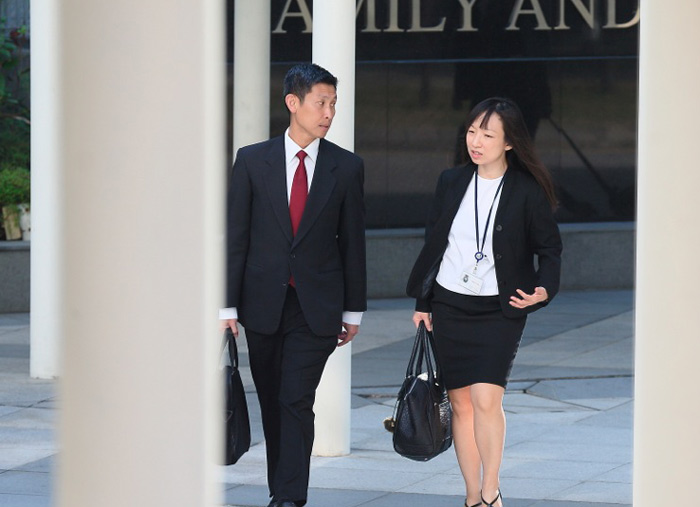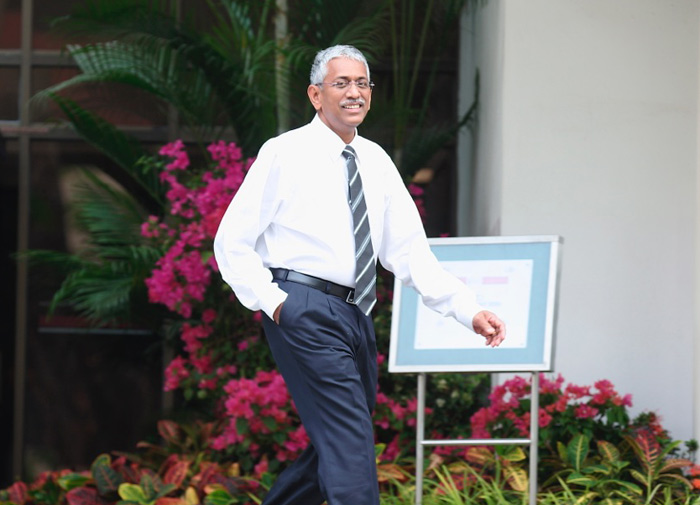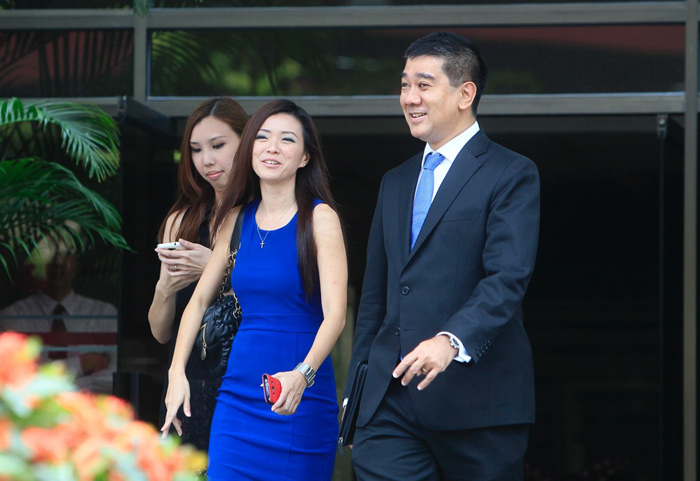The prosecution made broad-brushed generalisations, did not produce strong evidence and had disregard for the timeline of events which contradicted its case—these were the defense’s submissions for a “no case to answer” argument.
Church money was used for church purposes. That is a fact of the City Harvest case, said senior counsel for Serina Wee, Andre Maniam this morning in court.
While yesterday’s submissions from defense focused on issues of entrustment and dominion, Maniam’s oral submission this morning sought to define and debunk the prosecution’s accusations of “sham” bonds and dishonesty by defining what legally constitutes the two concepts.
Maniam noted that even the prosecution concur there was nothing illegal about using the church’s money for the Crossover Project, as it was in line with the church’s constitution; what the prosecution is actually saying is that the money came from the wrong fund, Maniam told the court.
However, the senior counsel pointed out that knowledge of wrong use does not constitute dishonesty, which is an intention to cause wrongful loss or obtain wrongful gain.
It was the church’s own money that was used for church purposes, he said, adding that the prosecution up to the point of their closing submissions had not sufficiently proven that there was an intention on the part of the accused to cause wrongful loss to the church.
When an individual acts in the interest of the organisation in question, even if it may be disobedient, it does not constitute an offence dishonesty, according to the senior counsel.
In a steady fashion, the defense counsel for Serina Wee systematically laid out the essence of what the prosecution appeared to be saying: that church funds were used in line of the church’s objective, but came from the wrong fund. Maniam then asked, why was it done? Was it done in the interest of the church? Or to cause wrongful loss to the church? Quoting from the Penal Code, he showed how, when an agent’s disobedience to its principal’s directive was done in the interest of the principal, it constitutes an unauthorized payment for an authorized purpose. Such a misappropriation could not be considered dishonest or a criminal breach of trust.
Maniam pointed out that the prosecution has changed its case a number of times since the start of the trial. In its opening statement, the prosecution stated that the transactions (round tripping) were designed to throw the auditors off the scent of the bogus investments. At the close of the submission after 42 days of trial, the prosecution now states that the transactions were to prevent the auditors from raising concerns regarding the disclosure, valuation and recoverability of the bond investments. Maniam noted that all three aspects were not hidden, but were openly discussed between the accused and the auditors.
He asked the court to consider what had been discussed with the auditors, reiterating that by Aug 2008, Baker Tilly already had a copy of the Xtron BSA (bond subscription agreement).
More importantly, they knew five key points: that CHC had subscribed to the Xtron bonds through AMAC; that the money to buy the bonds came from the church’s building fund; that the bond proceeds went to the Crossover Project; that Xtron’s status as a going concern was noted and reflected in the books, and finally, that Xtron had a close relationship with CHC.
Maniam thus asked how it was possible for the accused to “deceive” the auditors of the true purpose of the bonds when the audit working papers clearly spelled out the purpose of the bonds.
 In her oral reply, deputy public prosecutor Mavis Chionh tried to address various points the six defense counsels had raised yesterday and this morning. Among her arguments was that it is not a matter of law for the prosecution to show that the accused had sole control over the funds. She challenged the Penal Code’s definition of “dominion” and insisted that Kong Hee, Tan Ye Peng and John Lam had dominion over the church funds.
In her oral reply, deputy public prosecutor Mavis Chionh tried to address various points the six defense counsels had raised yesterday and this morning. Among her arguments was that it is not a matter of law for the prosecution to show that the accused had sole control over the funds. She challenged the Penal Code’s definition of “dominion” and insisted that Kong Hee, Tan Ye Peng and John Lam had dominion over the church funds.
In answer to N. Sreenivasan’s submissions yesterday, Chionh accused his client Tan Ye Peng of leaving out important information in E269, the detailed document Tan had sent auditor Foong Daw Ching to spell out the relationships between the various entities. Sreenivasan had suggested this document showed that Tan was transparent and honest. The DPP, however, claimed instead that the document suggested Tan was trying to create a false impression that Xtron was independent of CHC.
Sreenivasan later pointed out that this document had been produced in 2008, before the supposed First Information Report had even been filed and two years before the investigations even happened. The senior counsel said it made no sense that Tan would come up with such a document voluntarily if he was trying to hide information from the auditors in the first place. Tan could not possibly have known that these documents would be used as evidence in court today.
The DPP also re-iterated the prosecution’s arguments on the allegedly “sham” nature of the investments, the mens rea of the accused and the round-tripping acts done to create a false impression that the bonds were being redeemed.
The defense counsels, in their response, noted that the failure of the prosecution to determine each of the defendant’s individual roles has led them to make generalizations and lump the accused in the same basket when different ones had not even been involved in different issues and emails.
Edwin Tong, the defense lawyer for Kong Hee, stated that for the trial to continue, the prosecution had to establish every element of the charges with evidence. He urged the court to find primary facts in the case that gave rise to inferences that something illegal has happened.
Tong also pointed out that there was a glaring omission of Kong being in any emails that the prosecution used as key evidence for the criminal breach of trust charges. He also pointed out a large number of instances in which Kong had reminded the other defendants to check with the auditors and lawyers that the transactions were above board.
Kannan Ramesh, senior counsel for Sharon Tan also noted that the email, E58, that the DPP now claimed was “damning evidence” of Sharon’s involvement in the alleged conspiracy, appeared as a footnote in the prosecution’s submission. Clearly, he said, there were no documents that showed that his client was actually involved.
 Sreenivasan focused the court back to the fact that in this trial, there is an absent accuser and an absent victim. While the prosecution pointed to a suspicious transaction report in 2008 as the first information report, Sreenivasan showed the court that the period of the alleged conspiracy (the period of round-tripping charges started in 2009) shows that the FIR could not be the 2008 document. He put it to the court that the FIR was filed in 2010 and the investigations followed.
Sreenivasan focused the court back to the fact that in this trial, there is an absent accuser and an absent victim. While the prosecution pointed to a suspicious transaction report in 2008 as the first information report, Sreenivasan showed the court that the period of the alleged conspiracy (the period of round-tripping charges started in 2009) shows that the FIR could not be the 2008 document. He put it to the court that the FIR was filed in 2010 and the investigations followed.
Chief district judge See Kee Oon told the court he would take two to three weeks to consider the submissions and decide whether or not there was a case for the defense to answer. Court is adjourned till 5 May when the judge will give his decision on the submissions.
中文报道 – CHC审讯:辩方提醒庭上教会资金用于教会目标;提议检方并未证实控状

